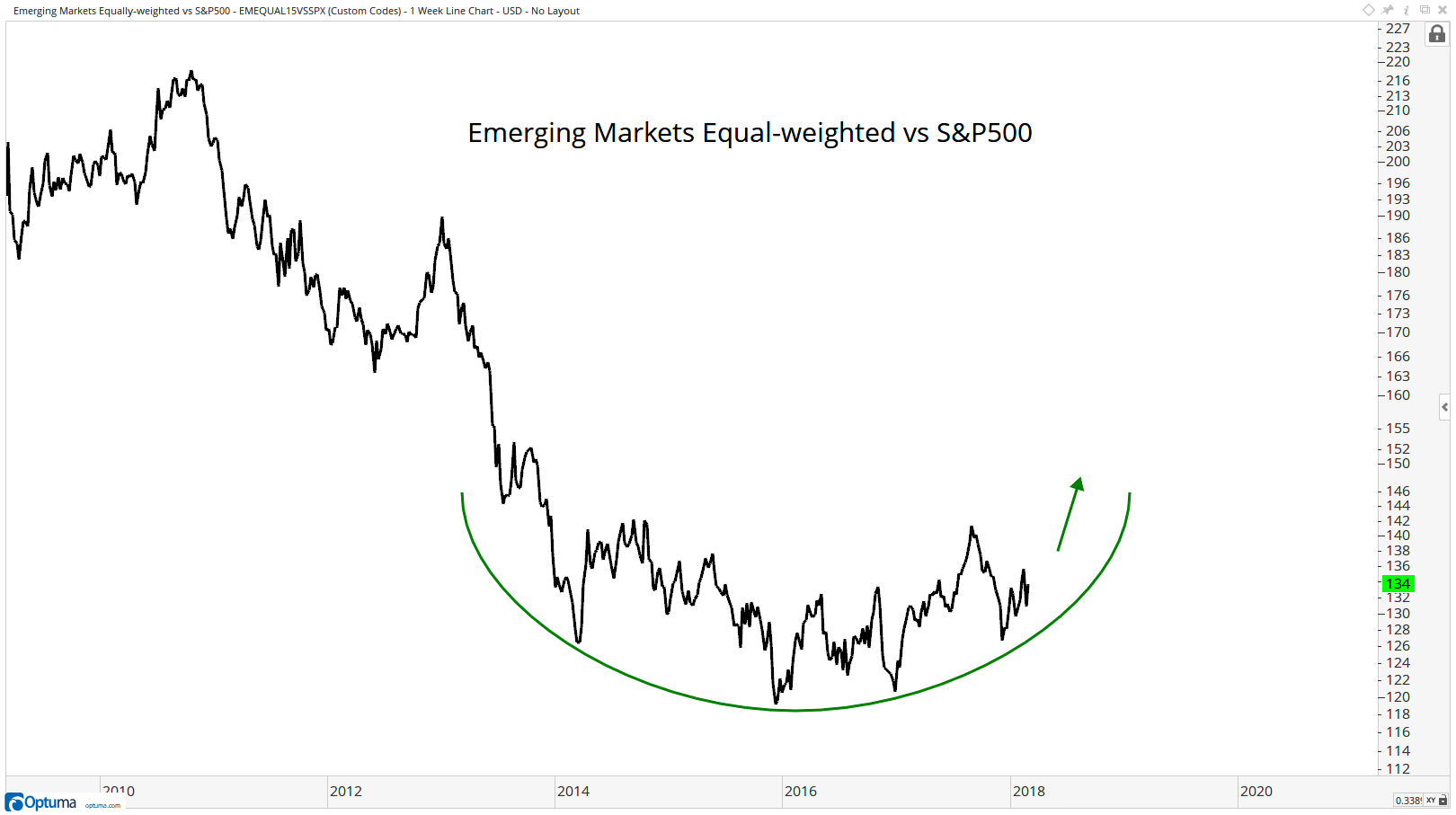Today we'll take a look at some other scenarios and try to give some idea on the chances of each happening. Understand as we do this that we are only giving the likelihood of an outcome. We are not saying any of these will occur. Also there may be other ways the year could unfold that we're not thinking about, however, what we'll discuss below seem to be the most probable outcomes that could happen.
Market Melt-up: The market recovers from its step decline and mimics to some degree 2017's meteoric advance. Stocks end 2018 with a better than 15% return, with the S&P 500 closing somewhere above 3,075. I think we're going to need a few things to happen now for this to occur. The first is that earnings are going to have to come in a lot better than indicated. Right now that is occurring as the S&P 500 earnings estimates have moved
north of $156.00 on a rolling four quarter basis. Earnings in the high $150's could possibly move the needle for higher prices than investors might think right now, especially if those estimates are followed up with higher earnings numbers for 2019. I think the other thing that needs to happen for this to occur is for investors to shrug off the current inflationary and interest rate concerns. Should earnings continue higher and investors ignore some of the negatives then there is a possibility of this happening. Also I think this is the scenario least likely anticipated right now by investors.
Estimated probability of occurring: 15-25%. Perhaps the odds could be a bit higher if earnings continue to impress.
A More Serious Decline: Markets spend most of 2018 in a trading range then some event or series of economic concerns comes to the forefront causing markets to head into a much deeper decline than most currently anticipate. So in this scenario we are discussing a general market decline of greater than 25%. Investors should understand that the historic volatility of stocks is currently between 12-15% so we are not talking about a normal market correction. Here we are discussing the possibility of a major corrective event that could take stocks down by a percentage that would be classified as a bear market. Absent an unexpected event I think this is a low probability outcome right now. The economic news is simply too good and despite the hype in certain areas {cryptocurrencies or cannabis for example} there is no major asset bubble likely to strike across broad swaths of the economy like housing prior to the last decline. It is possible in market's normal volatility that we could see a mediocre or even down year in stock values, but the probability of a secular bear market right now seems very low.
Estimated probability of a market decline of greater than 25% occurring: 5-10%.
The Unexpected Event: It is impossible to gauge such a probability because most of these could occur tomorrow or they could occur never. I don't know how for example you assign a value to a significant natural disaster occurring or a terrorist event with mass casualties. The probability is obviously not zero but is also not given that one will occur in the next 11 months. Also some of the events that markets have focused on such as war in Korea have calmed down a bit recently. If I had to include one unexpected event that could happen this year and is currently unlooked for in the markets it would be that in a massive rebuke to the Trump Administration, American voters go to the polls this fall in droves and throw the Republicans out of office in both the Senate and House. An event like that could be market defining as it would throw into question the President's pro-business agenda for the remaining two years of his term.
Estimated probability of an unexpected event: 2-5%
Estimated probability of Democrats taking control of both the House and Senate in 2019 15-25%.
Later this week we'll discuss what you need to be thinking about regarding your portfolio based on the current market environment and what we might see down the road.
Long ETFs related to the S&P 500 in client and personal accounts. Short S&P 500 in a personal account as part of a separate individual strategy.

